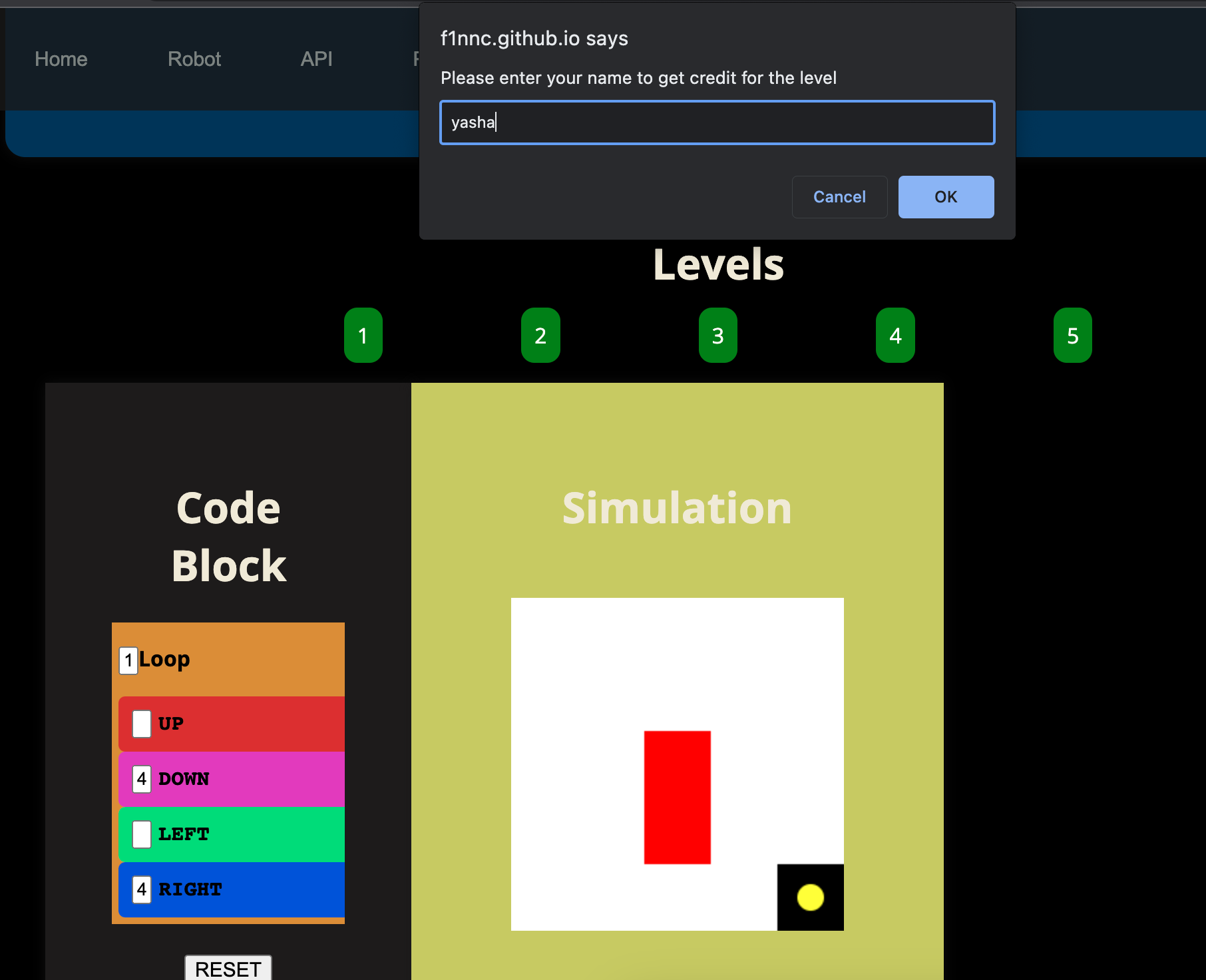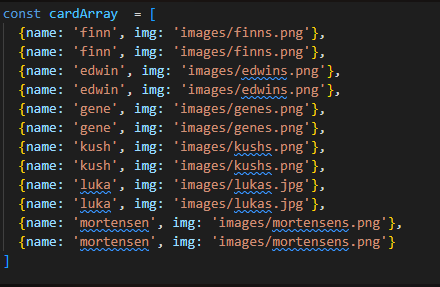4/24 Big Idea 3 - Lesson notes / hacks
Lesson about Big Idea 3
Introduction: Zeen
Hello, my name is zeen and today we will be presenting big idea 3. Our topics include 2d arrays, iteration, and lists and dictionaries.
Objectives
Master the concepts of iteration, list, 2d-arrays, Dictionaries, and APIs
Vocab
Here is some vocab during the lesson, you should be familar with them already no need for me to read these out, now I will pass the speaking off to Kush
- Iteration: A process that repates itself
- Array: Sometimes called a list, can keep strings and intergers inside it
- 2D-Array: A collection of data elements arranged in a grid-like structure with rows and columns
- Mutable: the ability to be changed or modified
- Key: A Singular identifier that is associated with a certin value
array = ["Hello", "Hi", "Whats up"]
twoDArray = [["Name", "ID", "Age"], ["Kush", "1", "16"], ["Finn", "2", "16"]]
print(f"This is a normal array: {array}")
print("This is a 2D array")
for row in twoDArray:
print(row)
board = [[' ', ' ', ' '],
[' ', ' ', ' '],
[' ', ' ', ' ']]
# Function to print the current state of the game board
def print_board():
print(" 0 1 2")
for i in range(3):
print(i, end=' ')
for j in range(3):
print(board[i][j], end=' ')
print()
# Function to check if a player has won the game
def check_win(player):
# Check rows for a win
for i in range(3):
if board[i][0] == player and board[i][1] == player and board[i][2] == player:
return True
# Check columns for a win
for j in range(3):
if board[0][j] == player and board[1][j] == player and board[2][j] == player:
return True
# Check diagonals for a win
if board[0][0] == player and board[1][1] == player and board[2][2] == player:
return True
if board[0][2] == player and board[1][1] == player and board[2][0] == player:
return True
# If no win condition is met, return False
return False
# Function to check if the game is a tie
def check_tie():
for i in range(3):
for j in range(3):
if board[i][j] == ' ':
return False
return True
# Function to play the game
def play_game():
# Initialize player and turn counter
player = 'X'
turns = 0
# Loop until the game is over
while True:
# Print the current state of the board
print_board()
# Get the player’s move
row = int(input(f"{player}'s turn. Enter row (0-2): "))
col = int(input(f"{player}'s turn. Enter column (0-2): "))
# Check if the move is valid
if board[row][col] == ' ':
board[row][col] = player
turns += 1
# Check if the player has won
if check_win(player):
print_board()
print(f"{player} wins!")
return
# Check if the game is a tie
if check_tie():
print_board()
print("It's a tie!")
return
# Switch players
player = 'O' if player == 'X' else 'X'
else:
print("That space is already taken. Try again.")
# Start the game
play_game()
times = 0
numbers = [1, 2, 3, 4, 5]
## Loops
for i in range(5):
print("hi")
while times <= 5:
print("hello")
times = times + 1
## Function with a parameters
def print_numbers(x):
for num in x:
print(num)
print_numbers(numbers)
Iteration Game
- Link to the game
- Play the levels (only play the first 2 in class)
- Explain how the game relates to itertation
function run() {
// Read input values from the HTML document and convert them to integers.
UPinput = parseInt(document.getElementById("up").value);
DOWNinput = parseInt(document.getElementById("down").value);
LEFTinput = parseInt(document.getElementById("left").value);
RIGHTinput = parseInt(document.getElementById("right").value);
looper = parseInt(document.getElementById("loop").value);
runner.style.opacity = 0;
// Create an array to hold the movements.
let movements = [];
// Push 'up' movements to the array.
for (let l = 0; l < looper; l++) {
for (let k = 0; k < UPinput; k++) {
movements.push(up);
}
// Push 'down' movements to the array.
for (let i = 0; i < DOWNinput; i++) {
movements.push(down);
}
// Push 'left' movements to the array.
for (let a = 0; a < LEFTinput; a++) {
movements.push(left);
}
// Push 'right' movements to the array.
for (let c = 0; c < RIGHTinput; c++) {
movements.push(right);
}
}
// Set the initial index to 0 and execute each movement in sequence with a delay of 800 milliseconds.
let index = 0;
let intervalId = setInterval(() => {
// If the end of the movements array has been reached, stop executing movements.
if (index >= movements.length) {
clearInterval(intervalId);
win(); // Call the win function.
return;
}
movements[index](); // Execute the movement at the current index.
index++; // Increment the index.
}, 800);
}
List = [1, 2, 3, 4, 5]
Dict = {
1: "Hi",
2: "Hello",
3: "Whats Up"
}
# Why Do I call 0 for the first thing in a list, but 1 for Dict
#
print(List[0])
print(Dict[1])
How I used a dictonary to make a game
Memory Game:James- Link
import random
word_list = ["python", "computer", "programming", "algorithm", "database", "function", "variable", "loop", "iteration", "array", "mutable", "insertion", "deletion", "key", "API"]
word = random.choice(word_list)
scrambled_word = "".join(random.sample(word, len(word)))
print(f"Unscramble the following Computer Science Word: {scrambled_word}")
hints = 1
guesses = 1
guess = ""
while guess != word and guesses <= 4:
guess = input("What's the unscrambled word? ").lower()
if guess != word:
print("Sorry, that's not the word. Try again!")
if guesses == 1:
guesses += 1
elif guesses == 2:
print(f"Hint 1: The first letter of the word is '{word[0]}'")
guesses += 1
elif guesses == 3:
print(f"Hint 2: The second letter of the word is '{word[1]}'")
guesses += 1
else:
print(f"All 4 Guesses have been used, you didn't unscramble the word, the word was {word}")
guesses += 1
else:
print("Congratulations, you unscrambled the word!")
Hacks: Your Score/1
General 0.3
- Copy this noteboook into your personal fastpages
- Answer all questions
- put the question in a new markdown block (so we can grade faster)
Iteration 0.2 (can get up to 0.23)
- Get to level 5
- Take ScreenShots of your name inside the box an put them in your ticket
- Create a code segment with iteration that does something cool
2D array 0.2 (can get up to 0.23)
- Explain how the tic tac toe game works
- Give 3 Examples of games that can be made from 2D arrays
List and Dictionaries 0.2 (can get up to 0.23)
- Explain the differences between Lists and Dictionaries
- Make a code block that manipulates either a list or a dictionary
Hacks
General
What are some examples of 2d Arrays?
- A seating chart for a theater or stadium, a map, a grid-based game like Battleship or Connect Four, and an image.
What is a modern day game that could be classified as a 2D array?
- Pac-Man.
Describe a 2D array in your own words.
- A 2D array is a data structure that stores data in a grid format with rows and columns. It's like a table or spreadsheet, with each cell holding a value or piece of data.
What is the definition of iteration in your own words?
- Iteration is the process of repeating a set of instructions or a code block multiple times until a certain condition is met or a desired result is achieved.
What parts of the code use iteration? The "while" loop used to check for correct guesses until the word is completely guessed is an example of iteration in the code.
Explain which parts of the code use lists.
- The variable "word_list" is a list of words that can be randomly selected for the game.
- The "correct_guesses" list is used to keep track of the correct letters guessed so far.
- The "incorrect_guesses" list is used to keep track of the incorrect letters guessed so far.
Explain what list manipulation is happening in that part.
- The list manipulation happens when adding letters to either the "correct_guesses" or "incorrect_guesses" list. If the guessed letter is correct, it is added to the "correct_guesses" list. If the guessed letter is incorrect, it is added to the "incorrect_guesses" list. These lists are then used to display the correct and incorrect guesses to the user.
Iteration

for number in range(1, 50):
print(number * 5 / 2)
2D Array
The 2D array is used to portray the Tic-Tac-Toe game board. There are three lists and each list has three elements in it. It's supposed to be a board. Each element in the list can be 'X' or 'O' which are like those X's and O's you see in tic-tac-toe, or it can be like an empty space ' ', which is just nothing.
Games: Minesweeper, Battleship, & Connect Four
Lists & Dictionaries
List: A list is a sequence of several variables, grouped together under a single name. Instead of writing a program like x0 , x1 , x2 , … it is more efficient to define a single variable x and access its members x[0] , x[1] , x[2] , etc.
Dictionary: Dictionary coding is a way to make messages shorter so they can be sent faster. It works by finding patterns in the message and using shorter words to represent those patterns. This makes the message take up less space, which is helpful when sending things like text messages or emails.
names = ["yasha", "james", "quinn", "ahad", "josh"]
names.append("mort")
print(names)
#### Dictionary Manipulation
nbaplayer = {
'name': 'Curry',
'age': 84,
'position': 'Point Guard'
}
del nbaplayer['age']
print(nbaplayer)
